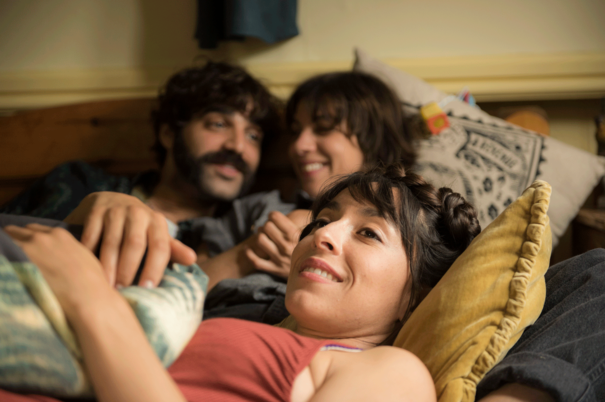Conventions of the Non-Traditional Family
Alonso Aguilar

Anchor and Hope
A boat wanders about the picturesque canals of London. In it, Eva and Kat maintain a relationship that seems to flow with the calm of the lapping canal waters, until the death of their cat and the appearance on the scene of an eccentric male figure ends up recontextualizing the nature of their connection.
The bohemian atmosphere and the ease with which the characters own their sexuality suggest a “contemporary” view of interpersonal relationships, but the central conflict of the film emerges from the difficult dialectic generated by the confrontation of these surface circumstances with the more conservative expectations of the ideal family.
On a conceptual level, the film stimulates reflection, but the charismatic performances and the formal beauty of the cinematographic treatment, composed of long, searching takes, are at odds with the rather one-dimensional characterization of the struggle between the two women, which is limited to exploring the nuances of lust and bitterness. The dramatic structure remains predictable and the uneven juxtaposition of scatological humor and solemn introspection creates a tonal clash.
As a romantic tragicomedy, ANCHOR AND HOPE exercises a certain appeal in the way it presents paradigms of non-hegemonic coexistence, but the problem ―like that of the central relationship itself― emerges when it becomes clear that, beyond the rebellious façade, what must actually be confronted is something essentially conventional.

